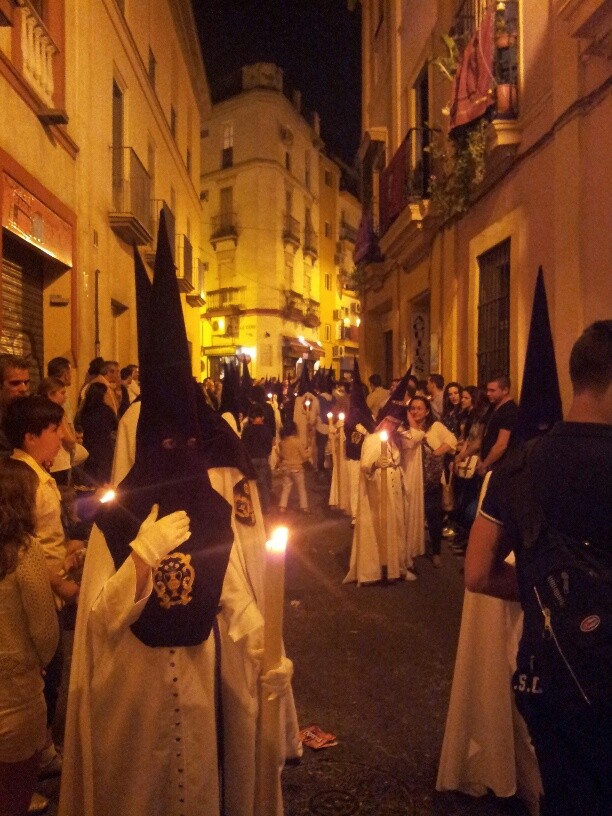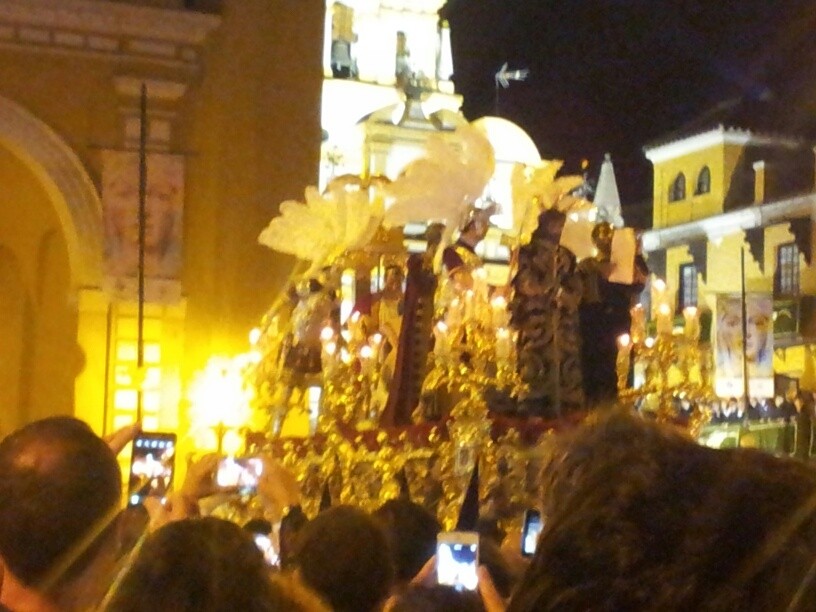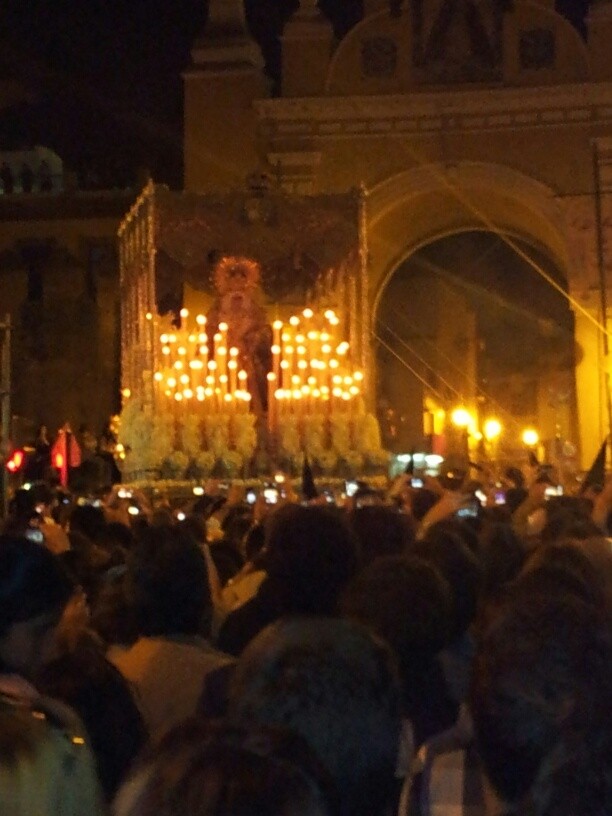Sevilla en Semana Santa
I realized very early, that Sevilla and its inhabitants are a little bit different than the rest of Spain. This is noticeable by the style of clothing, habits of eating and behavior towards people from outside. But who wants to experience how these people really are has to witness the Semana Santa during the week of Easter. After spending the Semana Santa in Sevilla you can actually forget everything that you have heard or known so far about the Sevillanos. Firstly, this whole event is very polarised, which means you can either love it or hate it... but it is impossible to ignore it unless you lock yourself into a room and lie in your bed 24/7 without social life and sunlight. Semana Santa literally takes over Sevilla. There is no break and no place of the city is untouched by it. So, what exactly can you expect by this "Holy week"? Some time ago, I mentioned that this city is full of churches. 128 to be precise, at least if I am not wrong. Well, 60 of these churches, which is around the half of all of them, are in the city centre and act as meeting points for the church brotherhoods, existing of church members, big and small, young and old. Each of these brotherhoods organises and hosts a procession that lasts several hours, the biggest one lasts even 13 hours and is a very big spectacle for the audience, but also for the protagonists of the procession themselves. To be precise, a procession exists of the disguised humans, the Nazarenos (which costumers are rather scary) and the Costaleros, who carry the artifacts (which are also known as "Pasos" during the procession) into the church. These Pasos exist of a statue of the crucifixed Christus and the wooden embodiement of the holy virgin (Virgen).

These Pasos are next to being accompanied by the Nazarenos also followed by a marching band, who are making the whole experience even more dramatic with their scenic music (I am not going to mention the obvious similarity between the Nazarenos and the KKK, since Sevillanos are extremely insulted by this comparison). The protagonists are hereby walking very slowly and making regular breaks, since the statues are unimaginably heavy (that is why there are being carried by 20 to 25 strong Costaleros). As soon as one of the statues appears, the Sevillanos completely freak out and gather around the procession. The whole spectacle is an amazing magnet for tourists, so up to 800. 000 people meet up in the city centre (which is more than the whole population of Sevilla). As soon as you dare to go into the city centre, you can expect not to be able to move from the same spot for at least 20 minutes. The whole event rather reminds me of an afternoon in the first raw concert, shortly before Metallica arrives on stage. Taking a walk is less recommendable for people who suffer on claustrophobia. The extreme lack of room is one of the main reasons, further parts of the streets within the city centre are only limited accessible to normal tourists and other visitors... many parts are used as tribunes where the sitting on a chair is linked with high costs (yes, sitting on a chair is very expensive in this case). During the experience it is possible that the masses need a long time to get from A to B, even if A and B are only 3 or 4 metres away from each other.


The highlight of the whole Semana Santa is the night from Thursday to Friday, which is known as Madrug
The highlight of the Semana Santa is in the night from Thursday to Friday, which is known as Madrugá. Around 00:30 starts the procession of the Macarena, which is the biggest church in the Northern Centre. It consists of 3000 Nazarenos, 3 Pasos and thousands of viewers, who completely lose their mind as soon as they see the virgin, as they start gathering around her and try touching it. Some start singing, some even start crying and a lot of people scream "guapa, guapa" (which means Beautiful, Beautiful). Some could assume now: Ok, they take this far too serious. Yes, they do. It gives you goose bumps, because it seems surreal (with a live show in the middle of the night, countless amount of people who seem all to be crazy... but then there are still the very impressive and expensive-decorated Pasos). The procession of the Macarena lasts 13 hours and ends at 13:30(! ) on the next day with the return to the church. The ordeal to witness this all for 13 hours was too difficult for me, you have to stay sober, which only a small percentage of the people managed to be. In the end, it is a huge party with a religious taste. Similar in length is another procession in the night, which starts in Triana and passes the Puente de Triana, which is an amazing spectacle during the night, even though you have to be a little bit scared regarding the bridge.

Ironically, most of my friends left Sevilla during the Semana Santa, just because they did not want to be there. I was actually really happy that I stayed for this week, which I am not going to forget soon. On the other hand, I am happy that it is over, since it was very exhausting and tiresome week.
Now that the Semana Santa is over, everyone is talking about the Feria de Abril. This seems to be a similar drinking party, just without Christ statues and incense. Maybe that is even better so.

Photo gallery
Content available in other languages
- Deutsch: Sevilla en Semana Santa
Want to have your own Erasmus blog?
If you are experiencing living abroad, you're an avid traveller or want to promote the city where you live... create your own blog and share your adventures!
I want to create my Erasmus blog! →




















Comments (0 comments)